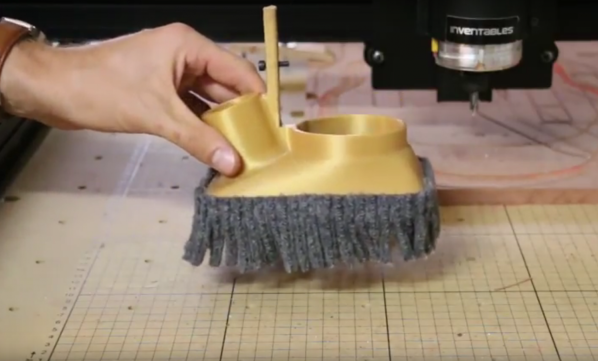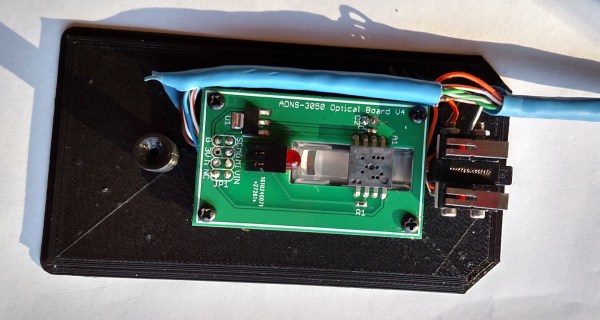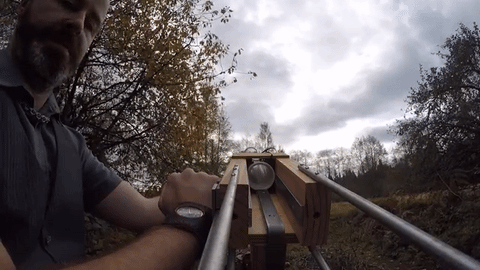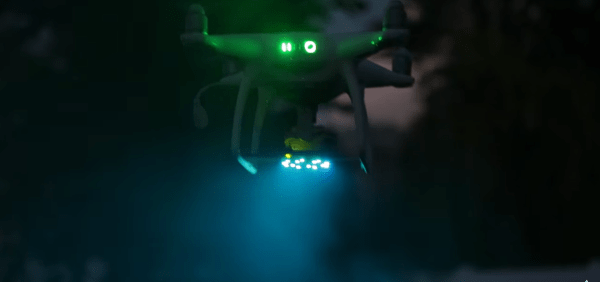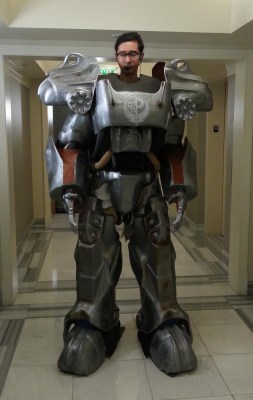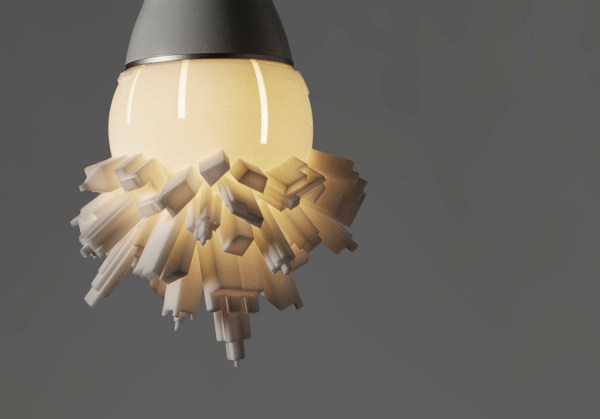Using a CNC router is a dusty business if your material of choice is wood. Sure, you can keep things tidy by chasing the cutter around the table with a shop vac, but that sort of takes the fun out of having a machine that can make cuts without you. The big boy machines all have integrated dust collection, and now you can too with this 3D-printed CNC router dust shoe.
Designed specifically for the X-Carve with a DeWalt 611 router, [Mark Edstrom]’s brush is a simple design that’s almost entirely 3D printed. The shroud encloses the router body and clamps to the mounting bracket, totally surrounding the business end of the machine. The cup is trimmed with a flexible fringe to trap the dust and guide it to the port that fits a small (1-1/4″ diameter) shop vac hose. The hose is neatly routed along the wiring harness, and the suction is provided by a standard shop vac.
Files for the cup are up on Thingiverse; we suspect it’d be easy to modify the design to work with other routers and dust collectors. You might even find a way to shroud a laser cutter and capture the exhaust with a DIY filter.
Continue reading “Clear The Air Around Your CNC Router With A Custom Dust Shroud”

